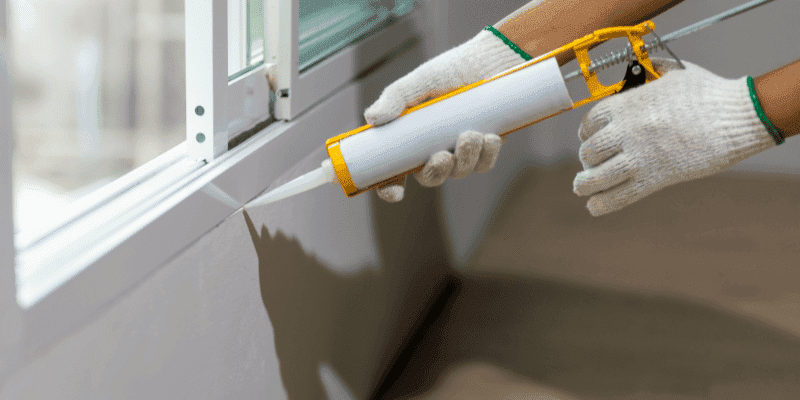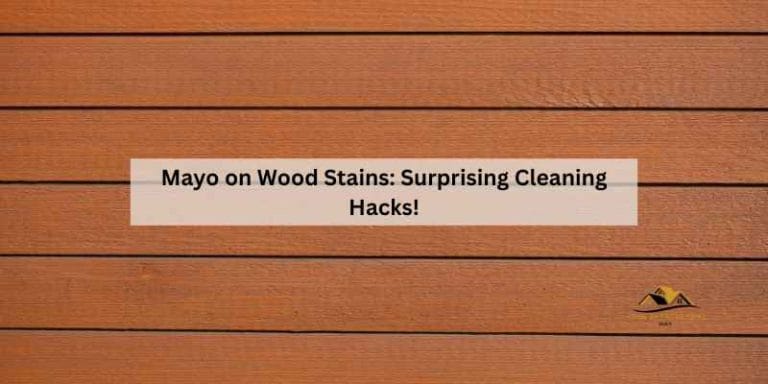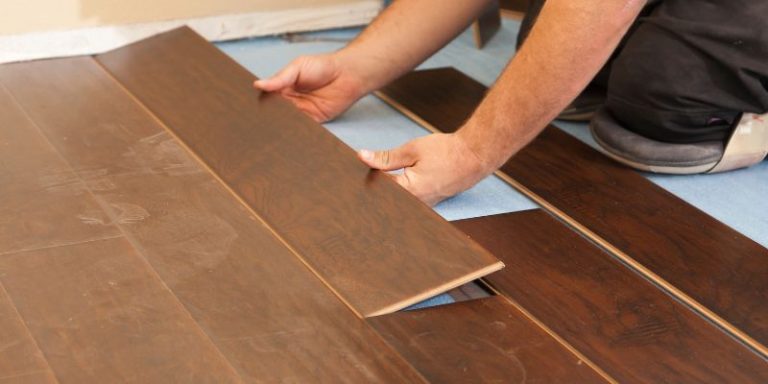Can You Stain Caulk: Tips for achieving a flawless finish
Yes, you can stain caulk. Staining caulk requires a specific type of caulk, such as silicone or acrylic, and a stain designed for that material.
It’s important to read the manufacturer’s instructions and test a small area first to ensure satisfactory results. Staining caulk can help blend it with the surrounding surfaces or give it a decorative finish. When done correctly, it can enhance the overall appearance of the caulked area.
However, it’s essential to consider the caulk’s purpose and whether staining will affect its durability or waterproofing properties. Understanding the process and choosing the right products is key to achieving the desired result when staining caulk.
Understanding Caulk Staining
Caulk staining can be a confusing topic, as staining caulk is not a typical practice. While you can’t directly stain caulk, you can instead use colored caulks or paintable caulks to achieve the desired color. It’s important to choose the right caulk type for your project and follow proper application techniques for the best results.
The Purpose of Staining Caulk
Staining caulking is a process used to enhance the visual appeal and longevity of caulk. By applying a stain to the surface of the caulk, you can achieve a more cohesive and polished look that blends seamlessly with the surrounding surfaces. Aside from aesthetic purposes, staining caulk can also provide added protection against moisture, mold, and mildew, prolonging the lifespan of the caulk and the surfaces it seals.
Benefits of Staining Caulk
The benefits of staining caulk extend beyond its visual impact. Some of the key advantages include:
– Enhanced Aesthetics: Stained caulk provides a cohesive and uniform appearance, eliminating the stark contrast between the caulk and the adjacent surfaces.
– Increased Durability: Staining caulk can improve its resistance to moisture, mildew, and external elements, ultimately prolonging its effectiveness.
– Customization: Stains come in various shades and finishes, allowing you to personalize the color and texture of the caulk to suit your preferences.
Types of Caulk Suitable for Staining
Certain types of caulk are more suitable for staining than others. Silicone and polyurethane-based caulks are generally the best choices for staining due to their non-porous nature and ability to hold the color of the stain effectively. Latex and acrylic caulks, on the other hand, may not be as receptive to staining and could result in uneven or blotchy finishes.
In summary, understanding the purpose, benefits, and suitable types of caulk for staining is essential for achieving a successful and visually appealing result. Whether it’s for a professional construction project or a DIY home improvement endeavor, stained caulk can add a touch of sophistication and functionality to any space.

Choosing The Right Caulk
Choosing the right caulk is crucial when considering staining, as the type of caulk you choose will directly impact the staining process and the final outcome. Factors such as the material, durability, and flexibility of the caulk, as well as the surface to be stained, must be carefully taken into account.
Factors To Consider
When choosing caulk for staining, consider the following factors:
- Material: Ensure the caulk is compatible with the surface material to be stained, whether it’s wood, metal, or masonry.
- Durability: Look for a caulk that can withstand the elements and won’t degrade over time, especially if it will be exposed to outdoor conditions.
- Flexibility: The caulk should be able to expand and contract with the surface without cracking or losing its bond.
- Adhesion: It should adhere well to the surface and form a strong bond to ensure the stain adheres properly.
Best Caulk For Staining
For staining, silicone-based or hybrid caulks are often the best choice due to their durability, flexibility, and adhesion properties. They are suitable for a variety of surfaces and can withstand exposure to moisture and changing temperatures.
Preparing The Surface For Staining
When it comes to staining caulk, the key to achieving a smooth and even finish lies in proper surface preparation. Preparing the surface for staining is crucial to ensure that the caulk holds the stain effectively and results in a professional-looking outcome. In this section, we will discuss the essential steps for preparing the caulk surface for staining, including cleaning and drying the caulk and surface preparation techniques.
Cleaning And Drying The Caulk
Before staining caulk, it is vital to ensure that the surface is clean and free from any dirt, debris, or grime. Begin by thoroughly cleaning the caulk using a mild detergent and water solution. Use a soft-bristled brush or sponge to gently scrub the caulk, paying attention to any areas with visible dirt or residue. Rinse the caulk thoroughly with clean water to remove any soap or cleaning solution.
Once the cleaning process is complete, allow the caulk to dry completely before proceeding with the staining process. Ensure that the caulk is completely free from moisture before applying the stain to prevent moisture-related issues that can affect the adhesion and finish of the stain.
Surface Preparation Techniques
When preparing the caulk for staining, there are several surface preparation techniques that can be employed to ensure optimal results. Consider the following techniques:
- Light Sanding: Gently sanding the caulk surface can help create a more receptive surface for the stain to adhere to. Use a fine-grit sandpaper and lightly sand the caulk to promote better adhesion.
- Priming: Applying a suitable primer to the caulk can enhance the bond between the caulk and the stain, leading to a more durable and long-lasting finish.
- Masking: Use painter’s tape to mask off adjacent surfaces, ensuring clean and precise application of the stain without any accidental smudges or spills.
Staining Caulk Like A Pro
Staining caulk like a pro can enhance the aesthetic appeal of your home, offering a sleek and polished finish to your caulking projects. Whether you are sealing gaps around your windows or upgrading your bathroom, learning the techniques and tips for staining caulk can make a world of difference in the final outcome. In this comprehensive guide, we will explore the key strategies for achieving professional-looking results when staining caulk, focusing on the application tips and methods for selecting and testing the right stain.
Application Tips
When it comes to staining caulk, the application process is crucial to achieving a flawless finish. Follow these application tips to ensure a professional result:
- Thoroughly clean and dry the surface before applying the stain to ensure proper adhesion.
- Apply the stain evenly using a small brush, taking care to cover the entire caulked area with a smooth and consistent coat.
- Allow the stained caulk to dry completely before touching or exposing it to moisture to prevent smudging or smearing.
- For multi-step projects, consider applying a sealant over the stained caulk to enhance durability and longevity.
Stain Selection And Testing
Selecting the right stain for your caulk is essential to achieving the desired color and finish. Here are some key considerations for stain selection and testing:
- Choose a high-quality, waterproof stain that is suitable for use on caulk, ensuring long-lasting and fade-resistant results.
- Prior to staining the entire caulked area, test the selected stain on a small, inconspicuous area to confirm its compatibility and appearance.
- Consider experimenting with different stain shades to find the perfect match for your existing decor and color scheme.
- When testing the stain, pay attention to how it interacts with the caulk material and whether it adheres smoothly without streaking or discoloration.
Finishing Touches
When it comes to completing a home improvement project, it’s the finishing touches that bring everything together. One crucial detail often overlooked is the caulking. While caulking is primarily used for sealing joints and seams, a stained caulk can enhance the overall aesthetic of the project. Adding color to the caulk not only provides a clean and cohesive appearance but also helps in protecting and maintaining it over time.
Sealing And Protecting The Stained Caulk
Staining your caulk adds an extra layer of protection to the sealant, safeguarding it against moisture and other environmental elements. The stain acts as a barrier, preventing discoloration and deterioration of the caulk, thus extending its lifespan. Furthermore, the stained caulk not only maintains its functionality but also enhances the visual appeal of the entire project.
Maintenance And Longevity
After staining and sealing the caulk, regular maintenance is essential for its longevity. Over time, exposure to weather and wear and tear can cause the stained caulk to deteriorate. By performing periodic inspections and touch-ups, you can ensure the caulk remains in optimal condition. Additionally, using high-quality stain and sealant products will contribute towards the long-term durability of the stained caulk.
Frequently Asked Questions On Can You Stain Caulk
Can You Change The Color Of Caulk After It Has Been Applied?
Yes, you can change the color of caulk after it has been applied. There are products available that can help you tint caulk to match the desired color. You can also use paintable caulk and paint over it with a compatible paint color.
What Is The Best Way To Match Caulk Color To The Existing Surface?
The best way to match caulk color to the existing surface is to use color-matched caulk products available in the market. It’s important to choose a product that closely matches the color of the surface where the caulk will be applied, ensuring a seamless finish.
Are There Any Specific Caulk Products Designed For Staining?
Yes, there are specific caulk products designed for staining. These products are formulated to be stainable, allowing you to customize the color of the caulk to complement your project. It’s essential to follow the manufacturer’s guidelines for proper application and staining techniques.
Conclusion
Staining caulk can provide a seamless finish to your home improvement projects. By following the proper steps and using the right materials, you can achieve a professional look. Whether you want to match the caulk to your existing decor or simply enhance its visual appeal, staining caulk is a viable option.






